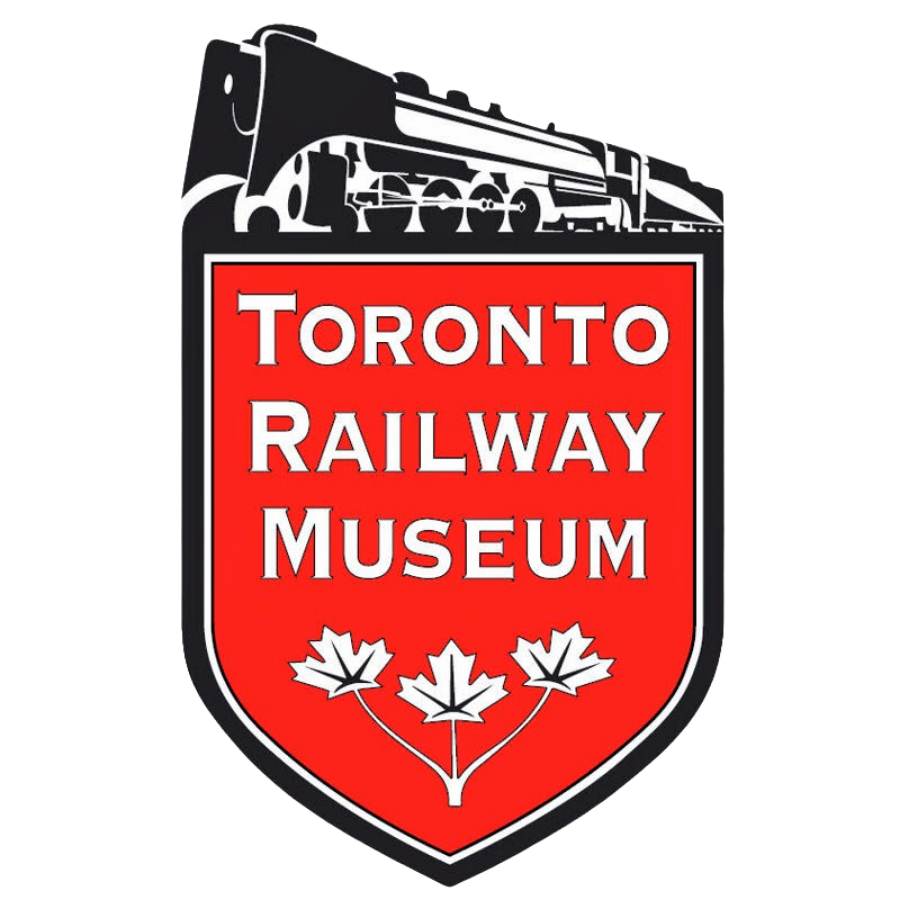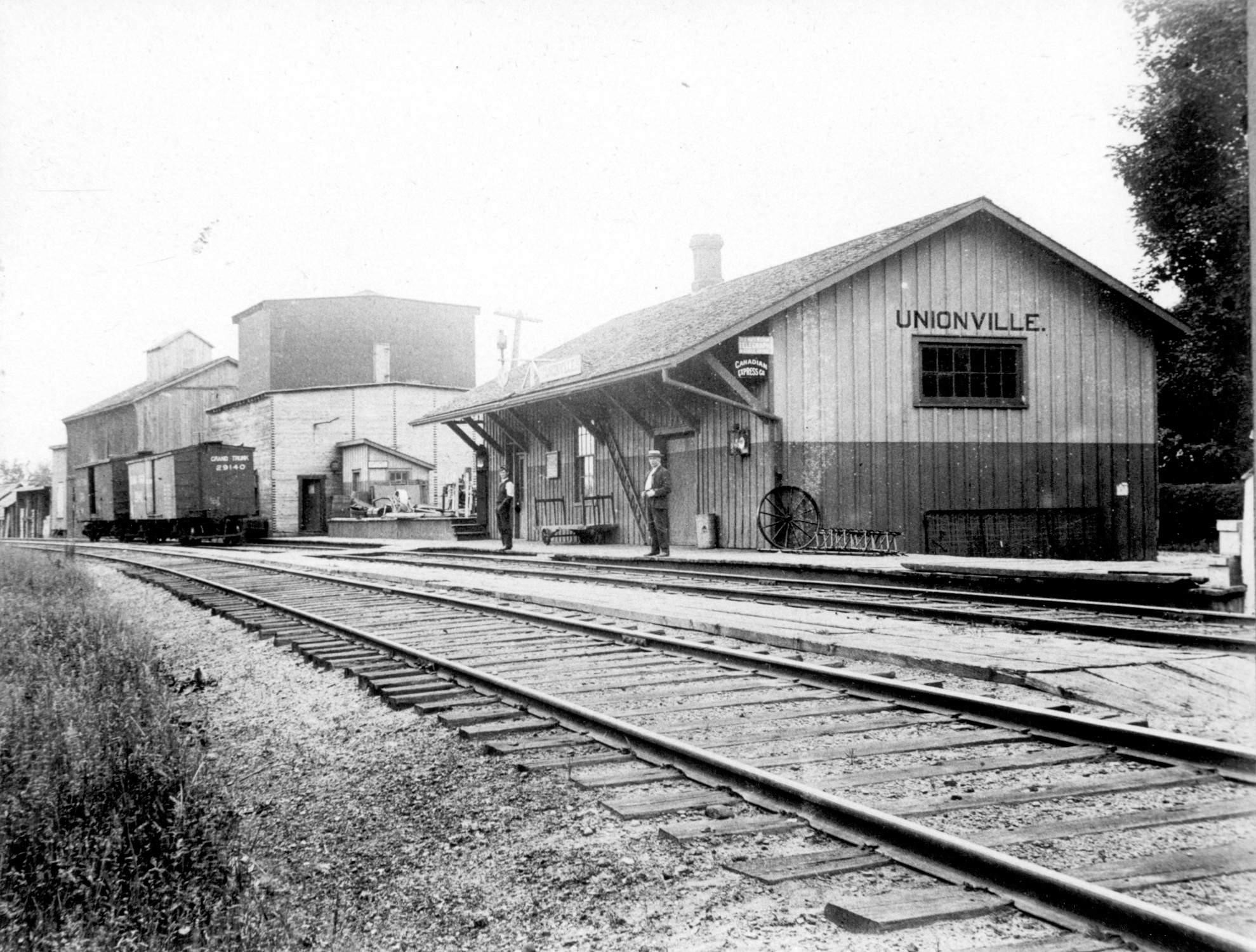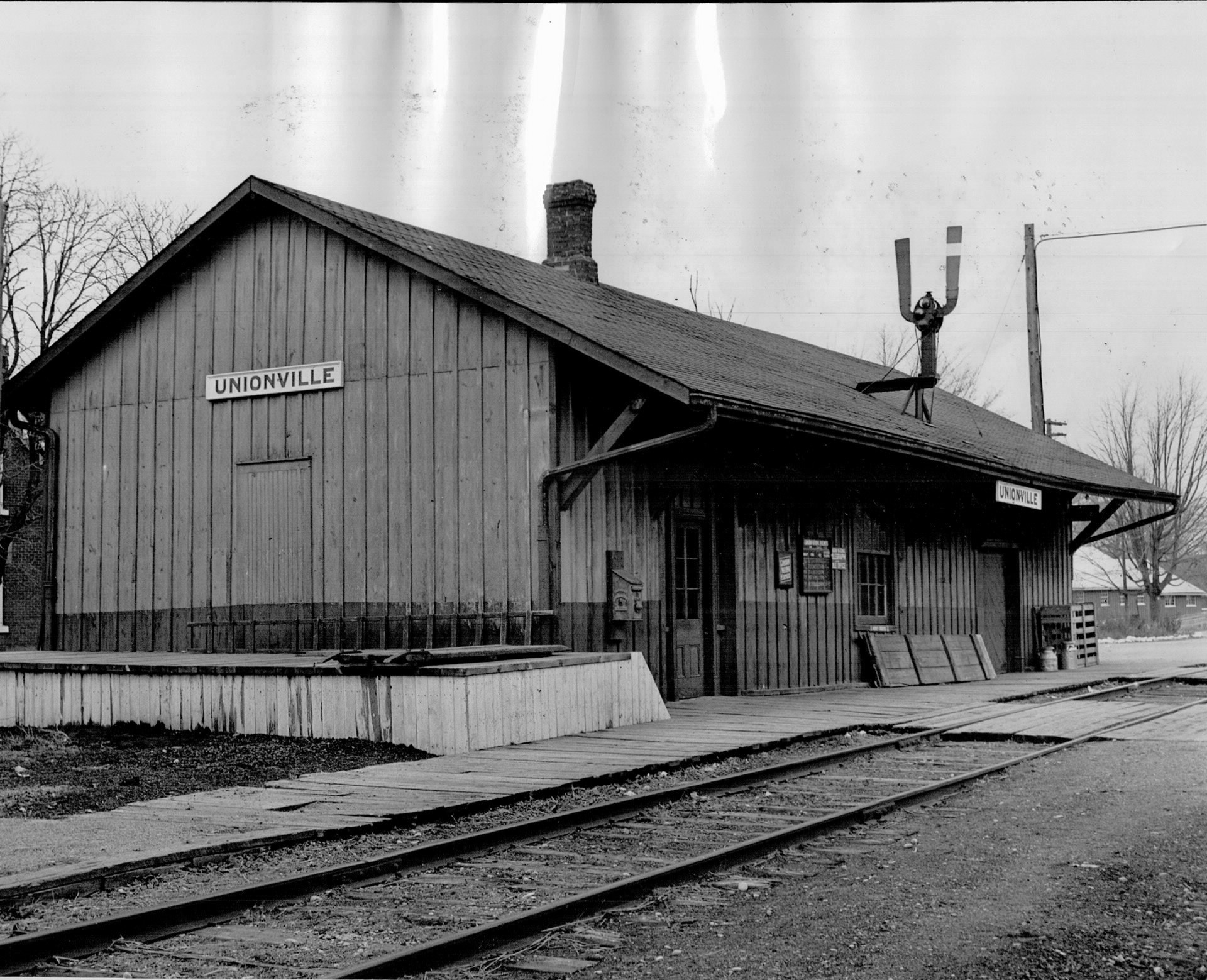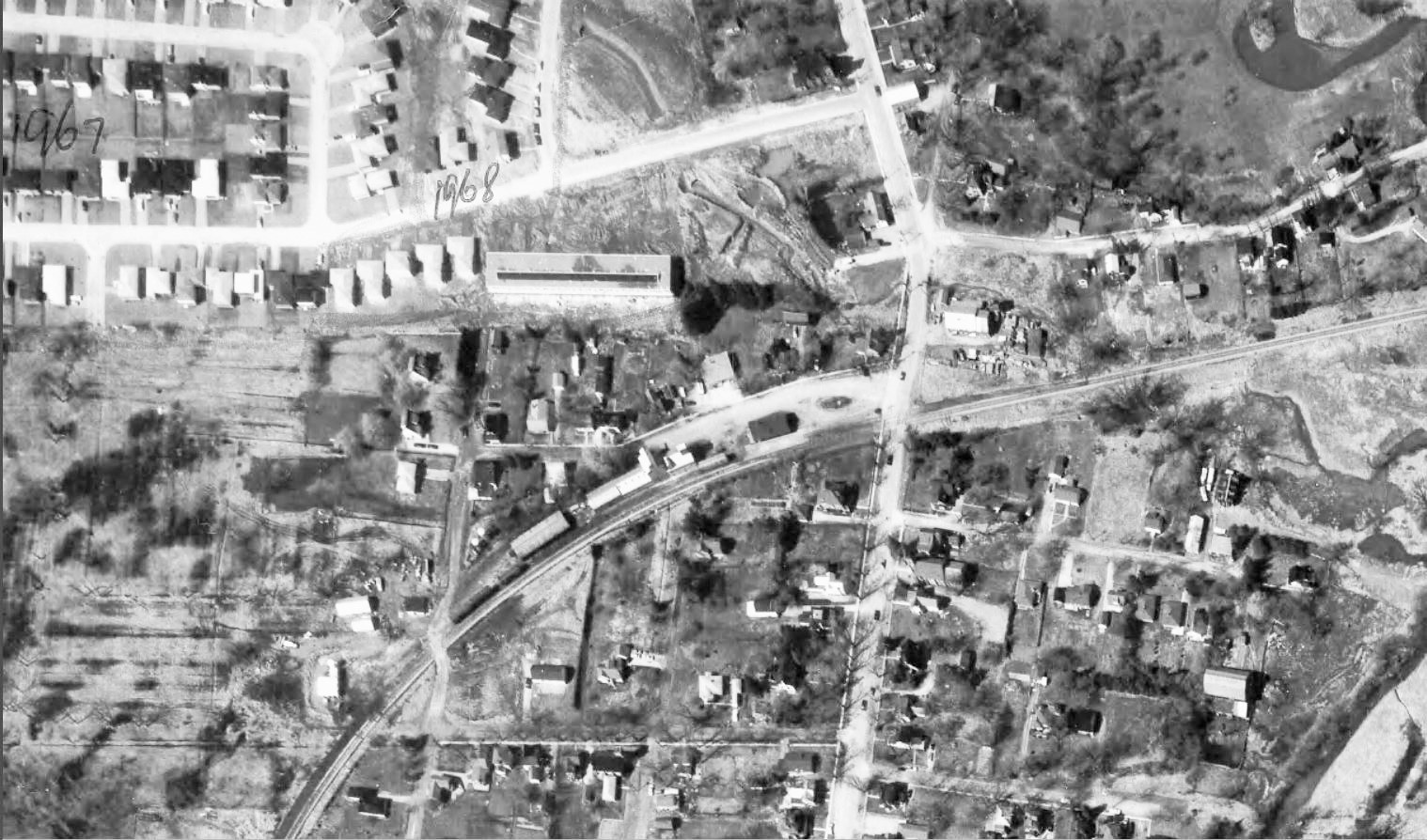Summary
Unionville Station was built in 1871 by the Toronto & Nipissing Railway while its construction was progressing north towards Uxbridge and Coboconk. It was a simple board-and-batten structure with a lean-to roof designed to keep passengers on the platform protected from the elements, following a standard design that was built extensively by the Toronto & Nipissing in other communities. It contained a waiting room, baggage room, and the station agent’s office, and unlike other stations on this line it would see very few modifications over the years. The first train arrived from Toronto on July 1st, 1871 while construction north of Uxbridge was still underway, and service through to Coboconk became available in 1872.
Narrow gauge soon fell out of favour in Canada and the financially burdened Toronto & Nipissing sought to merge with the nearby Midland Railway of Canada. As negotiations were ongoing in 1881, the Midland Railway financed the completion of a third rail to support standard gauge trains along the southern part of the Toronto & Nipissing. It was officially merged into the Midland Railway on April 1st, 1882, along with several other struggling branch lines. Just two years later on January 1st, 1884, the Midland Railway was leased by the much larger Grand Trunk Railway who would ultimately gain full control of it. A total of seven trains would stop at Unionville on a daily basis by 1899, though this was reduced to six per day by 1908.
The Grand Trunk encountered financial difficulties soon afterward, culminating in its nationalization and subsequent merger into Canadian National in 1923. As automobiles started to appear during the early 20th century, branch lines like this one would be among the first to feel the effects of reduced passenger ridership. Several old stagecoach routes in the area were turned into provincial highways in the 1920’s, allowing for a higher amount of car traffic and at faster speeds than before. Unionville’s suburbanization as a bedroom community of Toronto would ultimately save what little service remained. Service would be reduced to three trains per day in 1958, all of which ended entirely in 1962. After a brief period without passenger service, it would resume later the same year using economically efficient self-propelled Budd Rail Diesel Cars. This service was truncated to Stouffville in 1970, and by 1974 there were just two departures per day at Unionville. Canadian National’s remaining passenger service was marketed as VIA Rail starting in 1976, then turned into a separate crown corporation using the same name in 1977. VIA handled Unionville’s commuter service until 1982 when it was assumed by GO Transit. They would continue to use Unionville’s original station until the current GO station was established approximately 1.5 kilometers to the south in 1991. The old station was closed to passengers on May 3rd of that year and subsequently given to the Town of Markham who restored the building and turned it into a local community centre. The station was federally designated under the Heritage Railway Stations Protection Act in 1993.
Condensed Station Info:
| Location: | Served By: | Current State: | Date Built: | Date Demolished: |
| Station Lane and Main Street | T&N (1871 – 1882) MRC (1882 – 1884) GTR (1884 – 1923) CNR (1923 – 1977) VIA (1977 – 1982) GO Transit (1982 – 1991) | Preserved | 1871 | N/A |





